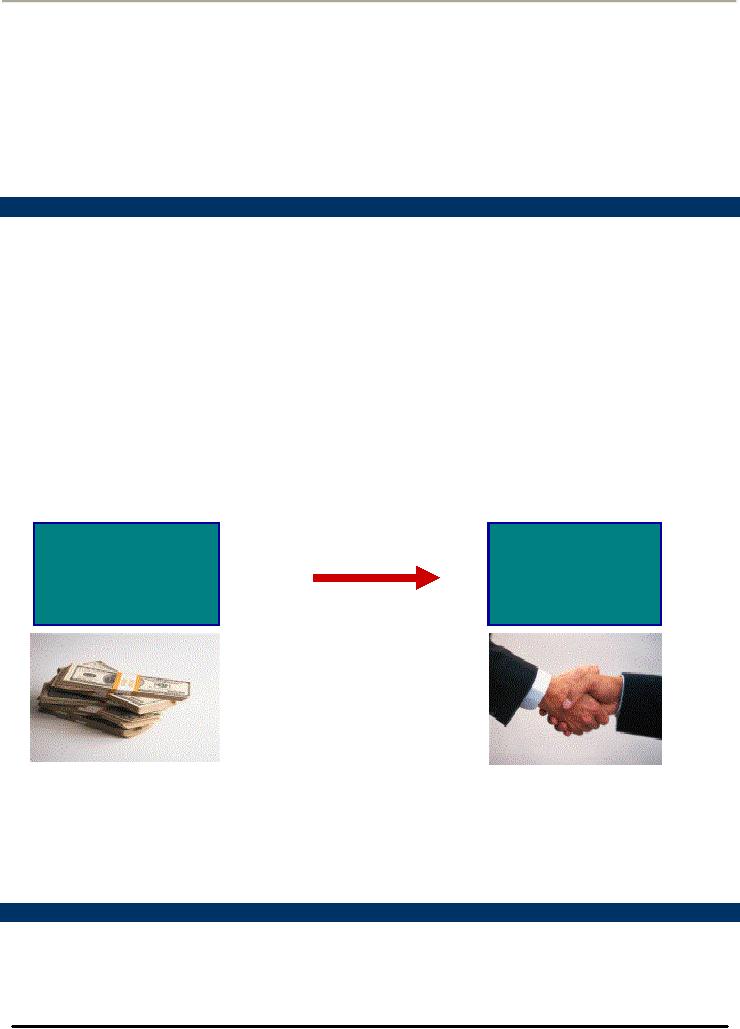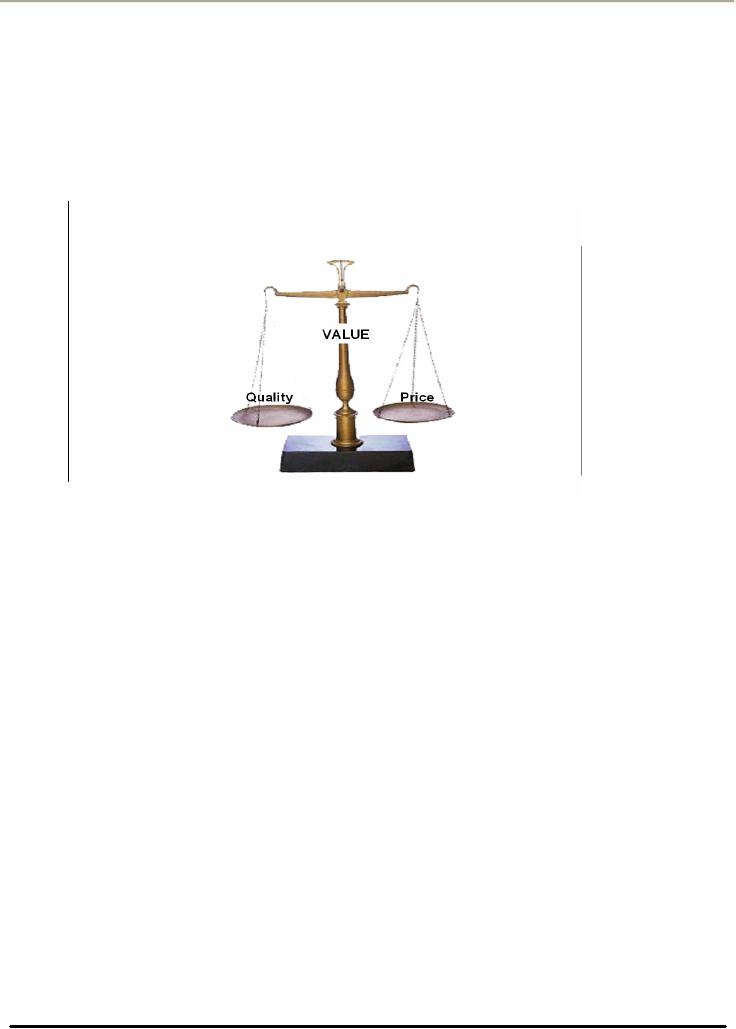 |

Consumer
Psychology (PSY -
514)
VU
Lesson
04
INTRODUCTION
TO CONSUMER PSYCHOLOGY
(CUSTOMER
VALUE, SATISFACTION AND
RETENTION)
OBJECTIVES:
o
Understanding
the three drivers of
Marketing Concept
Customer
Value
Customer
Satisfaction
Customer
Retention
1.
Development of Marketing
Approaches
Since
its emergence in 1950's many
companies have successfully adopted
Marketing Concept. Result is
extremely
competitive
markets. There are more
products in more shapes and
sizes targeting many different
consumer
segments.
Digital
Revolution in 1990's enabled
marketers to offer even more
products and services and
distribute them
widely
while reducing the costs and
barriers of entering into many
industries. It has accelerated the
rate at which
new
competition enters market
and has also speeded up the
rate at which successful targeting,
segmentation and
positioning
approaches must be up-dated or changed.
Savvy marketers know they
must outperform competitors
and
achieve full profit
potential from each and
every customer.
To
do this they must make customer the
core of company's organizational culture
across all departments.
Every
employee
must view customer as part
of customer relationship and not as
part of customer transaction. So in
the
traditional
Marketing Concept there has
been a development from transactional
approach to marketing to
relationship
perspective of marketing.
Transactional
to Relationship Marketing
Transactional
Relationship
Relationship-building
One-off
Investment
in customers
Investment
in products
Customer
analysis
Market
Segmentation
Long-term
profit
Short-term
profit
2.
Three Drivers of Successful
Customer Relationship
Three
drivers of successful relationship with
customer are:
Customer
Value
High
level of Customer Satisfaction
Building
a structure for Customer
Retention
11

Consumer
Psychology (PSY -
514)
VU
1.
Customer Value
Customer
Value is long-existing concept that
emerged from ancient trade
practices.
Value:
"satisfaction of customer requirements at the
lowest total cost of ownership,
acquisition and use "
Value
has Relative worth or
importance
Customer
Value is the ratio between the
customers's perceived benefits (economic,
functional and
psychological)
and
the resources (monetary, time, effort,
psychological) used to obtain
those benefits
Value-Driven
Marketing
Value-Driven
Marketing Strategies Assist in 10
Areas:
1.
Understanding customer choices (what kinds of
products and features are
important to customer? Are
the
products
designed keeping in view the choices of
the customers)
2.
Identifying customer segments (what
are the specific needs of
customers in a particular segment,
which
means
understanding the common needs of consumers in
particular groups)
3.
Increasing their competitive
options (Means that we add
features in the product that
would give some
competitive
advantage to consumers compared to the
competitors)
4.
Avoiding price wars
(providing value in product
and keeping the price
low)
5.
Improving services quality
(add additional services
that would not let the
customers go to another brand )
6.
Strengthening communications (maintaining a constant
touch with consumers)
7.
Focusing on what is meaningful to customers
(concentrating on the perceived needs and
associating the
product
effectively with the satisfaction of a
perceived need)
8.
Building customer loyalty (concentrating
on the relationship dimension and developing loyalty
of the
customer
with the product)
9.
Improving brand success (using
all the handles effectively to
improve brand success)
10.
Developing strong customer brand
success and relationships
Value
Proposition
Providing
superior customer value requires the
organization to do a better job of anticipating and
reacting to the
customers
needs than the competition does. It is
important to understand customer
value from the
customer's
point
of view. The term Unique
Selling Proposition is now being
widely replaced by the term Value
Proposition.
For
example notice the following value
propositions:
Car
manufacturing company:
Zero
defects in manufacturing, and superior
and personalized customer
service
12

Consumer
Psychology (PSY -
514)
VU
PERSONAL
COMPUTER MANUFACTURING
COMPANY:
Customized
PC systems assembled speedily
and sold at uniform
prices
INTERNATIONAL
FAST FOOD CHAIN:
Core
Uniform Standards world wide
quality, service, cleanliness
and value
The
Value Creating
Organizations:
Organizations
(along with individual
employees) should be seen as
value-creating entities.
Value-creating
organizations
solve individual customer
problems. A strong competitive edge
can be gained by
consistently
providing
superior customer value. In order to
create and deliver superior
customer value organizations
must be
strong
in both purpose and
process.
2.
Customer Satisfaction
Individual's
perception of the performance of the product or
service in relation to his/her
expectations is defined
as
Customer Satisfaction.
Customer
whose experience falls below
expectations will be
dissatisfied
Customer
whose experience matches the
expectations will be
satisfied
Customer
whose experience exceeds
expectations will be delighted
Perceived
Value
Customers
evaluate experiences
as:
Dissatisfaction
-
experience
Satisfaction
0
neutral experience
High
satisfaction
+
positive experience
Such
assessments impact future
purchase decisions and
ongoing relationships with
organizations
Customer
Types
Levels
of customer satisfaction may be
linked together with customer
behavior to identify five
customer types:
Loyalists:
Completely
satisfied customers who keep
purchasing
Apostles:
Customers
whose experiences exceed
their expectations and who
provide very positive word
of
mouth
Defectors:
Customers
who feel neutral or merely satisfied
and are likely to stop
business with the
company
Terrorists:
Customers
who have negative experience
with the company and who
spread negative word
of
mouth
Mercenaries:
Customers
who are very satisfied but
who have no real loyalty to
the company and may
defect
because
of low price elsewhere or on
impulse
Researches
propose that companies should strive to
create apostles, raise the
satisfaction level of defectors
and
turn
them into loyalists, avoid having
terrorists or hostages and reduce the
number of mercenaries.
3.
Customer Retention
The
overall objective of providing value to
customers continuously and more
effectively than the competition is
to
have
highly satisfied customers.
Even more than that is to
have highly delighted customers. So
that it is in the best
interest
of the customers to stay with the
company rather than to switch to another
company
The
modern day sales environment is
characterized by:
Very
few transaction oriented
sales groups
Sales
territories are getting smaller
Customer
replacement is expensive
13

Consumer
Psychology (PSY -
514)
VU
The
above factors make it imperative
for a company to retain their existing
customers.
Customer
retention makes it in the best interest of customers
to stay with the company rather than
switch to another company
Why
Customer Retention:
Customer
retention is important because it is
always more expensive to win
new customers than to retain
the
existing
ones.
Loyal
customers:
o
Are less price
sensitive
o
Buy more products
o
Pay less attention to competitors
advertising
o
Spread positive word of
mouth
Selective
Relationships:
Marketers
who designate increasing
customer retention rates as
strategic corporate goals must
also recognize that
all
customers are not equal.
Sophisticated marketers build
selective relationships with their
customers based on
where
their customers rank with
reference to profitability rather than
merely striving for customer
retention.
Selective
relationships are built with the
customers based upon their respective
profitability
Customer
Profitability Focused
Marketing
A
consumer retention savvy
company closely monitors its
customers consumption volume and
patterns and
establishes
tiers of customers according to
their profitability levels
and develops distinct
strategies towards
each
group
of customers
Customers
who have received and
purchased several of company's
products must receive
extensive and expedited
customer
services.
Classifying
Customers @ Profitability:
Classifying
customers according to profitability
level goes beyond traditional
segmentation methods that
subdivide
consumers
on the basis of demographic, socio-cultural, or
behavioral characteristics. Customer
Profitability
Focused
Marketing tracks costs and
revenues of individual customers
and then categorizes them
into tiers based
upon
consumption behaviors that are
specific to the company's
offerings.
A
customer pyramid categorizes consumers
into following tiers:
PLATINUM
TIER
Heavy
users who are not
price sensitive and who
are willing to try new
offerings
GOLD
TIER:
Heavy
users but price sensitive
and may buy from
multiple providers
IRON
TIER:
Low
spending volume
LEAD
TIER:
Customers
who actually cost the
company by asking for more
attention, thus tying up the
company's resources
and
spreading negative word of
mouth
14
Table of Contents:
- INTRODUCTION TO CONSUMER PSYCHOLOGY:Consumer Behavior
- INTRODUCTION TO CONSUMER PSYCHOLOGY:Consumer research
- INTRODUCTION TO CONSUMER PSYCHOLOGY:Marketing Mix, Product, Price
- INTRODUCTION TO CONSUMER PSYCHOLOGY:Customer Value, Perceived Value
- VALUE AND RETENTION FOCUSED MARKETING AND CONSUMER DECISION MAKING PROCESS
- CONSUMER RESEARCH:Quantitative Research, Qualitative Research
- MAJOR STEPS IN CONSUMER RESEARCH PROCESS:Design of Primary research
- QUANTITATIVE RESEARCH DESIGNS & DATA COLLECTION METHODS
- QUANTITATIVE RESEARCH DATA COLLECTION TECHNIQUES:ATTITUDE SCALES
- QUALITATIVE RESEARCH DESIGNS & DATA COLLECTION METHODS
- CUSTOMER SATISFACTION MEASUREMENT, SAMPLING, AND DATA ANALYSIS AND REPORTING
- MARKET SEGMENTATION AND ITS BASES:Geographical Segmentation
- BASES FOR SEGMENTATION: DEMOGRAPHIC SEGMENTATION PSYCHOGRAPHIC SEGMENTATION
- BASES FOR SEGMENTATION: SOCIOCULTURAL SEGMENTATION USE RELATED SEGMENTATION USAGE SITUATION SEGMENTATION
- BASES FOR SEGMENTATION: BENEFIT SEGMENTATION:Intrinsic Cues
- BASES FOR SEGMENTATION: HYBRID SEGMENTATION STRATEGIES
- MARKET SEGMENTATION IMPLEMENTING SEGMENTATION STRATEGIES ENVIRONMENTAL INFLUENCES CULTURE
- HOW CULTURE IS LEARNT ENVIRONMENTAL INFLUENCES:Formal Learning
- CULTURE AND ITS MEASUREMENT ENVIRONMENTAL INFLUENCES
- MEASUREMENT OF CULTURE ENVIRONMENTAL INFLUENCES:Consumer Fieldwork
- SUBCULTURE CHAPTER 4: ENVIRONMENTAL INFLUENCES
- AGE AND GENDER SUBCULTURE CHAPTER 4: ENVIRONMENTAL INFLUENCES
- BASES FOR SEGMENTATION: BENEFIT SEGMENTATION:Market Segmentation
- SOCIAL CLASS CHAPTER 4: ENVIRONMENTAL INFLUENCES:Occupation
- CONSUMER SOCIAL CLASSES CHAPTER 4: ENVIRONMENTAL INFLUENCES:Affluent Consumer
- CONSUMER SOCIAL CLASSES CHAPTER 4: ENVIRONMENTAL INFLUENCES:Membership Group
- CONSUMER SOCIAL CLASSES CHAPTER 4: ENVIRONMENTAL INFLUENCES:Shopping Groups
- UNDERSTANDING PERSONALITY CHAPTER 5: INDIVIDUAL DETERMINANTS OF CONSUMER BEHAVIOR
- CONSUMER PERSONALITY, TRAIT THEORY AND SELF IMAGES
- CONSUMER MOTIVATION:Needs, Goals, Generic Goals
- UNDERSTANDING LEARNING:Intentional and Incidental Learning, Implications for Marketers
- INSTRUMENTAL CONDITIONING, INFORMATION PROCESSING AND MEMORY
- ATTITUDES:Characteristics of Attitudes, Attitudes have consistency
- ATTITUDE FORMATION AND CHANGE:How attitudes are learned?
- ATTITUDE CHANGE STRATEGIES:Resolving two conflicting attitudes
- INTRODUCTION TO CONSUMER DECISION MAKING:Decision Complexity
- Problem Recognition, Search and Evaluation and Decision and Purchase
- Decision and Purchase:Consumer Decision Rules, Output, Relationship Marketing
- Decisions Related to Post Purchase:Product Set up and Use
- Marketing Implications of Decisions Related to Post Purchase:Understanding
- Post Purchase Evaluation:Determinants of Satisfaction, Consumer Complaint Behavior
- Post Purchase Dissonance:Dissonance Reduction, Marketing Implications
- Consumerism:Roots of Consumerism, The Nature of Consumerism
- Consumerism – Issues and Responses:Environmental Concerns, Consumer Privacy
- Review – Consumer Psychology Course:Consumer Research, Consumerism